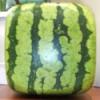I totally disagree, as others have. I don't mean to bring up an old argument, but I feel strongly about this, and for some odd reason clicking on this board took me straight to the page featuring this argument in full swing
The 'date' is basically telling us what time it is.
If you look at your watch (as long as it's digital), it will display hours, minutes, and seconds.
So your digital watch displays the integers based on how long their real-life referent is. Hours are longer than minutes, which are longer than seconds. Your watch would not display hours, then seconds, then minutes- and that is exactly why MM/DD/YY doesn't make sense. It's the same argument. If someone had a watch that did minutes after seconds, it would seem totally pointless. The integer's values should go from smallest to largest- it doesn't matter what the integers themselves do.
But wait!
With an analog watch, the minute hand is longer than the hour hand...shouldn't we all be in outrage about how that doesn't make sense?
The truth is that if you live in a country where people say "February 14th", 2/14 matches the standard spoken form. If you live in a country where "the 14th of February" is the norm, 14/2 matches the standard spoken form.
Assuming one is right or wrong because of some arbitrary rule that matches the format you're used to is a silly way of justifying your way of doing things.
If you ask an American when something occurred, and they say, "February 14th, 2011" and they write that date as 2/14/11, that format makes sense.
If you ask a Brit when something occurred and they say, "The 14th of February, 2011" and they write that date as 14/2/11, that format makes sense.
If there was a country were people always told the time as "26 past 11", what would be unusual about a digital clock reading 26:11 in that country? That we agree on a standard format for time and digital clocks doesn't mean there has to be a universal standard format for dates, spoken or written.
My issue with the varying formats is that too often it's not clear what format is being used. If I buy a can that says, "Best used by: 10/11/12" and there's nothing else, there's a problem. If a can says, "Best used by (DDMMYY): 101112", I could care less what the format is, because I have enough information to understand the important data.
I personally prefer YYYYMMDD (or YYMMDD for anything dealing only with post Y2K numbers) because it's both clear and lists chronologically when sorted alphabetically, but as long as the underlying information is clear to whoever's reading it, that as close to the "right" way as you're going to get.







